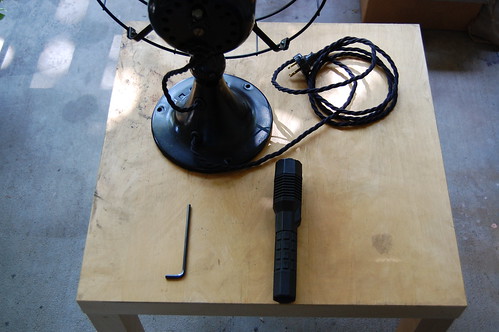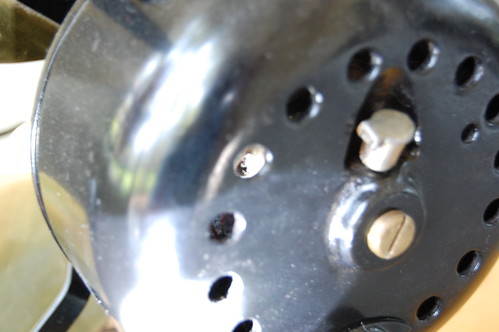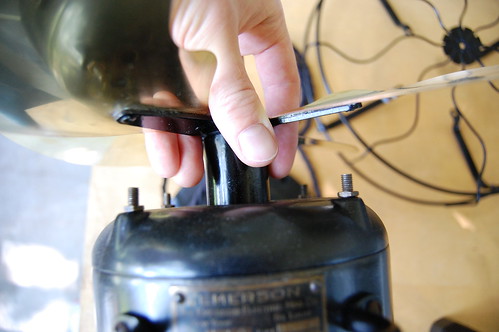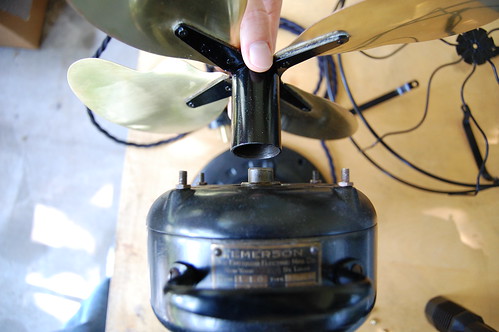Emerson Fan Blade Removal
September 13, 2008 Restoration 15 CommentsSo you’ve obtained an antique desk fan, and you want clean it up and restore it, but you just can’t seem to figure out how to get the blades off. Based on a number of email inquiries, here are instructions for removing the blades from certain Emerson antique desk fans. You will need some basic tools, including an Allen wrench, a flashlight, and a wrench appropriate to removing the cage.

Before you begin, you’ll need to remove the cage so you have easy access to the fan blades. Usually that means you need to undo the four bolts holding the cage assembly to the front of the motor casing.
Next, you need to examine the rotor of your Emerson’s motor using a flashlight. Look for a “blind” hole drilled into the side of the rotor. These are drilled by the manufacturer to remove some metal and balance the motor.

Once you’ve found the hole, insert the Allen wrench through one of the vent holes in the motor casing and into the balancing hole on the rotor.

The next photo shows a closeup of the Allen wrench inserted into the balancing hole.

When you do this, be very careful not to damage any of the stator windings. They are very fragile and protected only with a layer of cloth tape.

Once you’ve got the Allen wrench in position, grasp the fan blade by the blade hub (commonly called the “spider”). Yes, the blades will provide more leverage, but they bend pretty easily, and once you’ve bent a fan blade, it will never be the same again.

The threads fastening the wheel hub to the rotor are left-handed, so you need to spin the hub clockwise to unscrew it. The hub on my fan had frozen onto the rotor, and no amount of physical force would get it turning. I trickled some penetrating oil down the hub so it could get into the threads and free things up, but even after that I had to heat up the hub spindle with a heat gun. The heated metal expanded and broke the threads loose. It made a terrible squealing noise when I unscrewed it.

And the blades are off! You’ll want to clean up the threads at this point to remove any crud or rust, and add some oil to make it easy to remove the blades next time.
